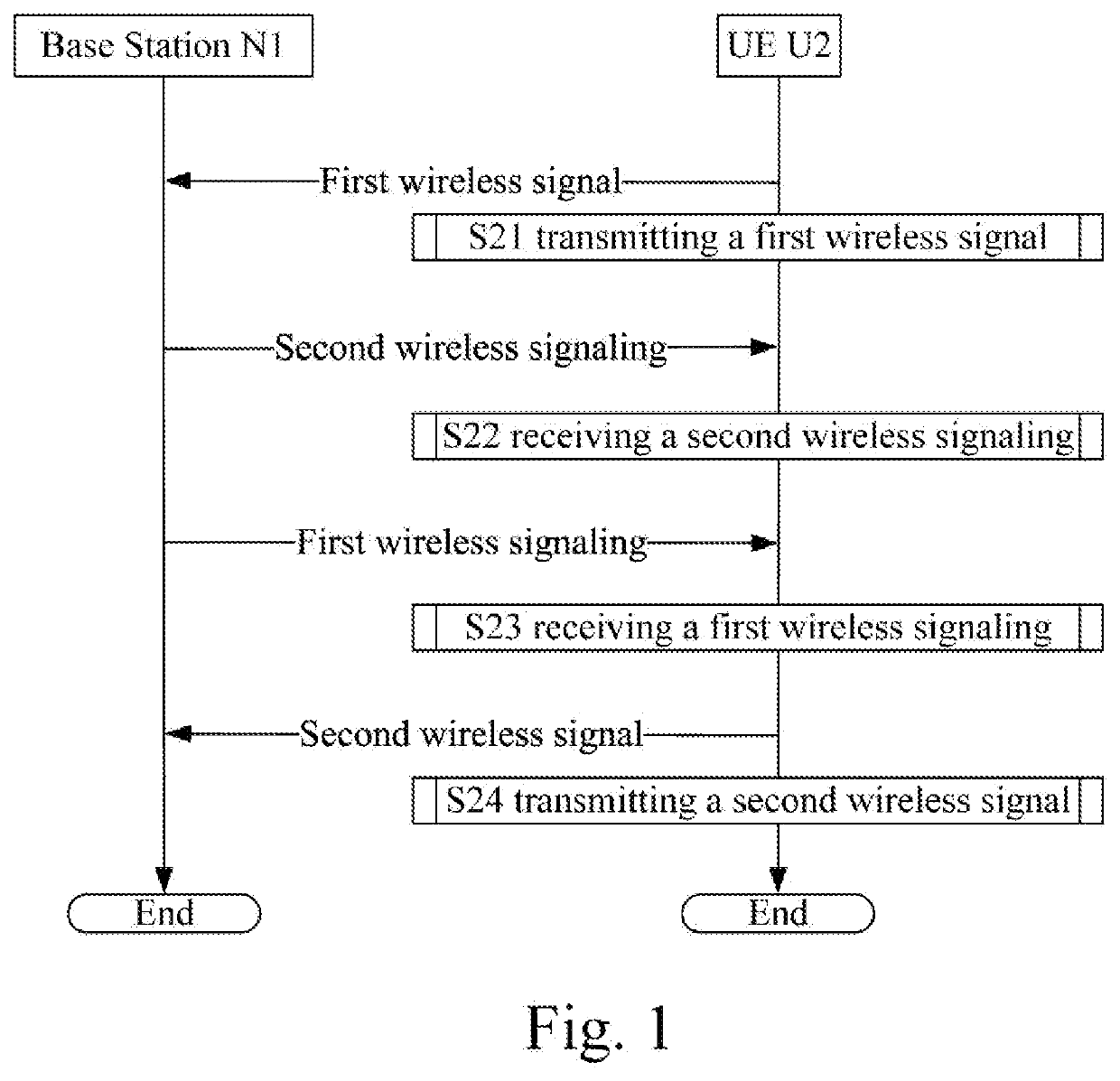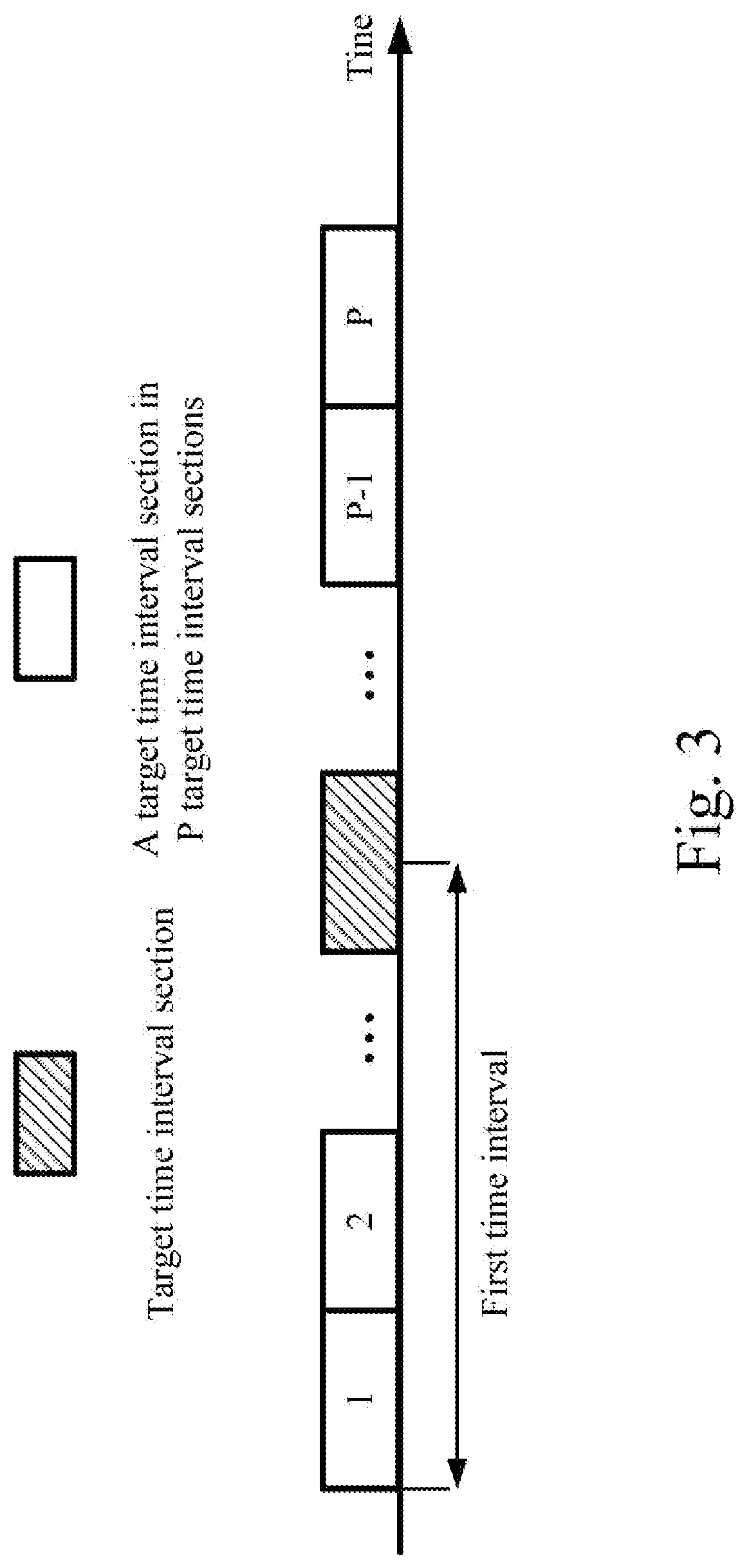Method and device for wireless communication
a wireless communication and wireless communication technology, applied in the field of wireless communication system and uplink transmission, can solve the problems of inability to meet the requirements of the scenario, collision, and failure to receive and decode uplink transmission, so as to improve the capacity of the entire system, avoid ambiguity of uplink transmission between multiple uplink receiving nodes, and improve link performance
- Summary
- Abstract
- Description
- Claims
- Application Information
AI Technical Summary
Benefits of technology
Problems solved by technology
Method used
Image
Examples
embodiment 1
[0185]Embodiment 1 shows a wireless signal transmission flow diagram, as shown in FIG. 1. In FIG. 1, the base station N1 is a maintenance base station of the serving cell of the UE U2.
[0186]For the base station N1, the first wireless signal is received in Step S11, the second wireless signaling is transmitted in Step S12, the first wireless signaling is transmitted in Step S13, and the second wireless signal is received in Step S14.
[0187]For UE U2, the first wireless signal is transmitted in Step S21, the second wireless signaling is received in Step S22, the first wireless signaling is received in Step S23, and the second wireless signal is transmitted in Step S24.
[0188]In Embodiment 1, the first wireless signal is generated by a first sequence; the first wireless signal is used to determine a first time interval by the base station N1; the first time interval is a time interval between a first time instant and a second time instant; the first time instant is a starting time instan...
embodiment 2
[0207]Embodiment 2 shows relationship between a first wireless signal and a second wireless signal, as shown in FIG. 2. In FIG. 2, the horizontal axis represents time, the rectangle filled by slashes represents the first wireless signal, and the rectangle filled by cross-lines represents the second wireless signal.
[0208]In Embodiment 2, the first wireless signal is generated by a first sequence; the first wireless signal is used to determine a first time interval; the first time interval is a time interval between a first time instant and a second time instant; the first time instant is a starting time instant at which a transmitter of the first wireless signal transmits the first wireless signal; the second time instant is a starting time instant at which a transmitter of the second wireless signal transmits the second wireless signal; the first time instant is earlier than the second time instant.
[0209]In one embodiment, the transmission channel corresponding to the first wireless...
embodiment 3
[0219]Embodiment 3 illustrates a relationship between the first time interval and the target time interval, as shown in FIG. 3. In FIG. 3, the horizontal axis represents time, the unfilled rectangle represents one time interval range in P time interval ranges, and the rectangle filled by slashes represents the target interval range.
[0220]In Embodiment 3, any two time interval ranges of the P time interval ranges do not overlap; the P is a positive integer. The first time interval belongs to a target time interval range; the target time interval range is a time interval range of the P time interval ranges.
[0221]In one embodiment, one time interval range refers to a continuous range of one time interval.
[0222]In one embodiment, the phrase that any two time interval ranges of the P time interval ranges do not overlap refers to no time interval belongs to two the time interval ranges.
[0223]In one embodiment, the interval lengths of any two time interval ranges of the P time interval ran...
PUM
 Login to View More
Login to View More Abstract
Description
Claims
Application Information
 Login to View More
Login to View More - R&D
- Intellectual Property
- Life Sciences
- Materials
- Tech Scout
- Unparalleled Data Quality
- Higher Quality Content
- 60% Fewer Hallucinations
Browse by: Latest US Patents, China's latest patents, Technical Efficacy Thesaurus, Application Domain, Technology Topic, Popular Technical Reports.
© 2025 PatSnap. All rights reserved.Legal|Privacy policy|Modern Slavery Act Transparency Statement|Sitemap|About US| Contact US: help@patsnap.com



